What Is a Junk Journal? The Art of Turning Scraps Into Stories
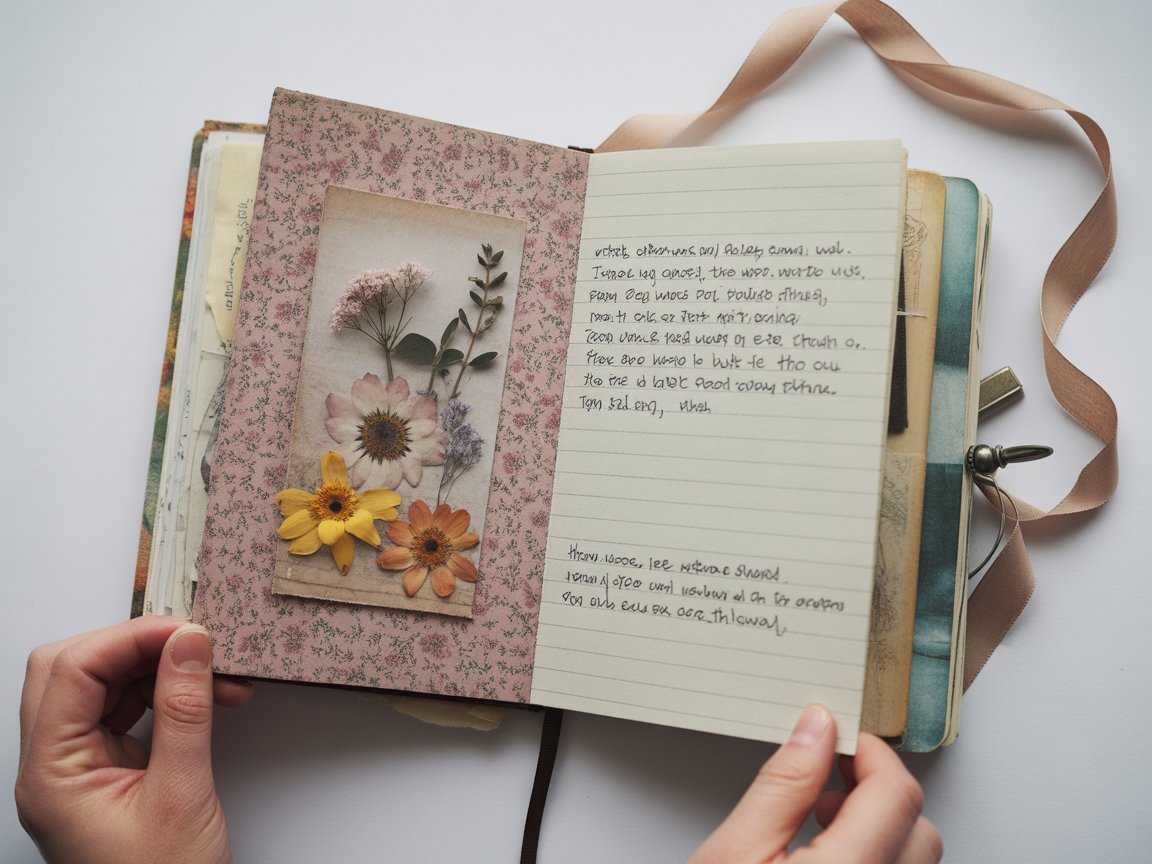
There’s something deeply satisfying about holding a book filled with wrinkled ticket stubs, tea-stained pages, pressed flowers, and handwritten notes that tell your story. This is the magic of junk journaling—a creative practice that transforms forgotten scraps and everyday ephemera into beautiful, textured keepsakes that feel like they’ve traveled through time.
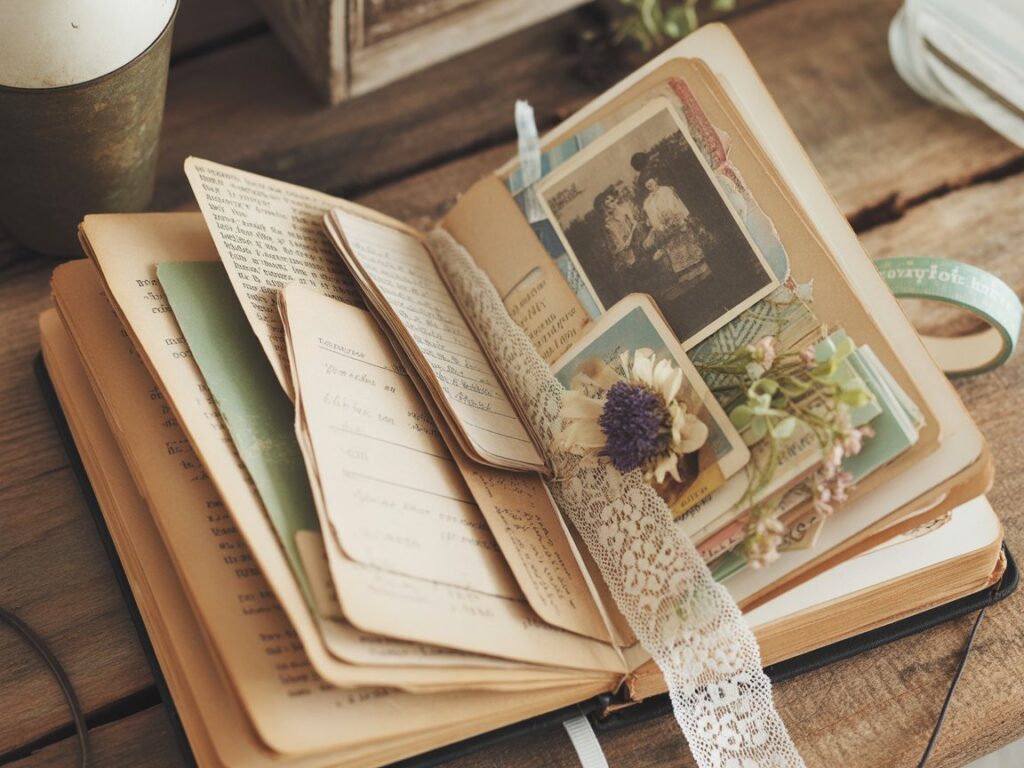
If you’ve ever felt overwhelmed by pristine blank journals or wondered what to do with that collection of vintage postcards gathering dust in a drawer, junk journaling might be your perfect creative outlet. It’s messy, it’s forgiving, and it celebrates imperfection in ways that traditional journaling never could.
Contents
What Exactly Is a Junk Journal?
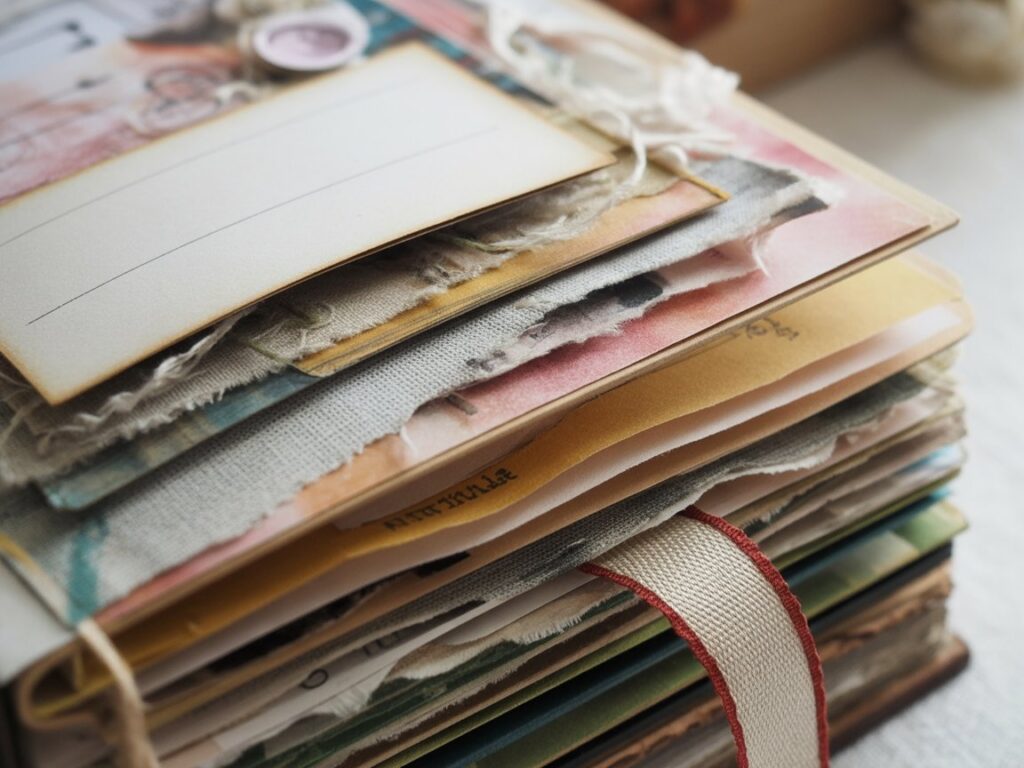
A junk journal is a handmade book created from repurposed materials, vintage papers, and found objects that would otherwise be discarded or forgotten. Think old book pages, fabric scraps, packaging materials, receipts, letters, sheet music, maps, and anything else that catches your eye. These elements are bound together—often with simple stitching or rings—to create a unique journal that’s as much an art piece as it is a functional notebook.
The term “junk” is beautifully misleading. These aren’t journals filled with actual garbage, but rather treasured collections of materials that mainstream society might consider disposable. A junk journal transforms the ordinary into something extraordinary, giving new life to items that carry history, texture, and character.
What makes junk journals so captivating is their layered, vintage aesthetic. Pages are often adorned with pockets, tuck spots, fold-outs, and interactive elements that invite you to hide secrets, tuck in photos, or attach small mementos. Every page turn reveals something new—a different paper weight, an unexpected color, a hidden envelope, or a delicate piece of lace.
How Junk Journals Differ from Scrapbooks and Planners
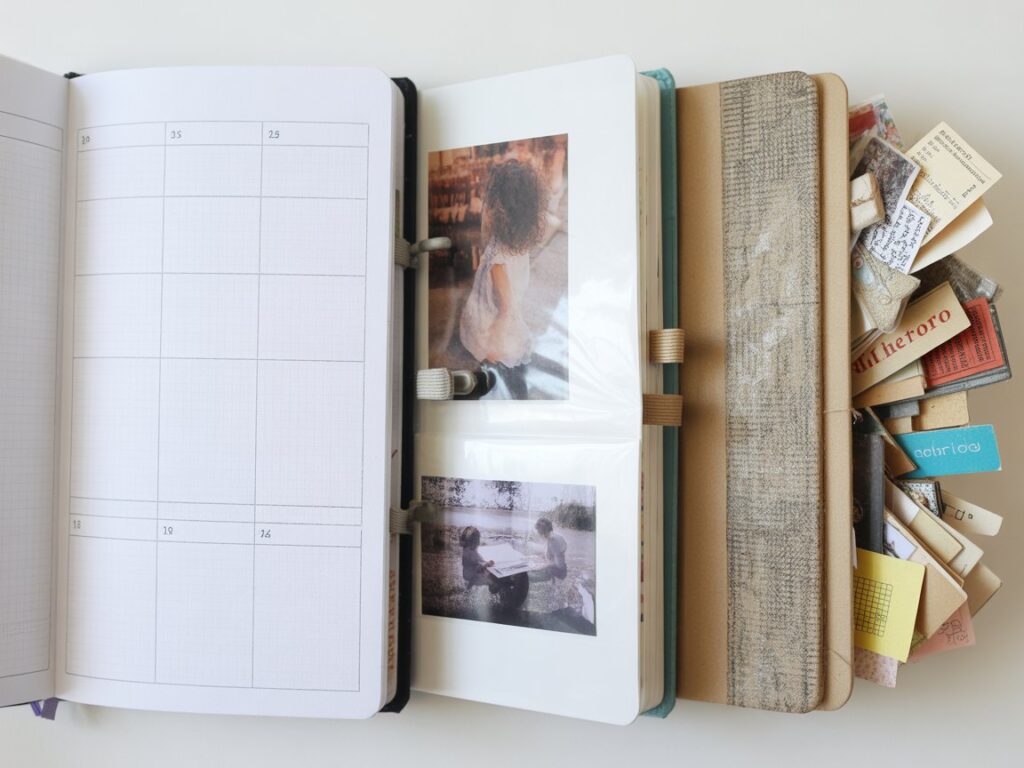
While junk journals share DNA with both scrapbooks and planners, they occupy their own creative category. Scrapbooks typically focus on preserving specific memories with photos as the main attraction, arranged chronologically or thematically with coordinating papers and embellishments. They tend to be more polished and photo-centric.
Planners, meanwhile, are functional tools designed to organize your schedule, tasks, and goals. Even decorated planners maintain a structured format with dates, grids, and designated spaces for specific information.
Junk journals break free from these constraints. They have no rules about what belongs on each page, no requirement for chronological order, and no pressure to document specific events. You might fill one with poetry, grocery lists, sketches, travel thoughts, and pressed flowers all mixed together. The focus isn’t on creating a polished final product but on the meditative process of layering, discovering unexpected combinations, and letting your creativity wander without a predetermined destination.
Think of it this way: if a scrapbook is a carefully curated photo album and a planner is a functional roadmap, a junk journal is a dreamy, vintage-inspired playground where anything goes.
Why People Love Junk Journals
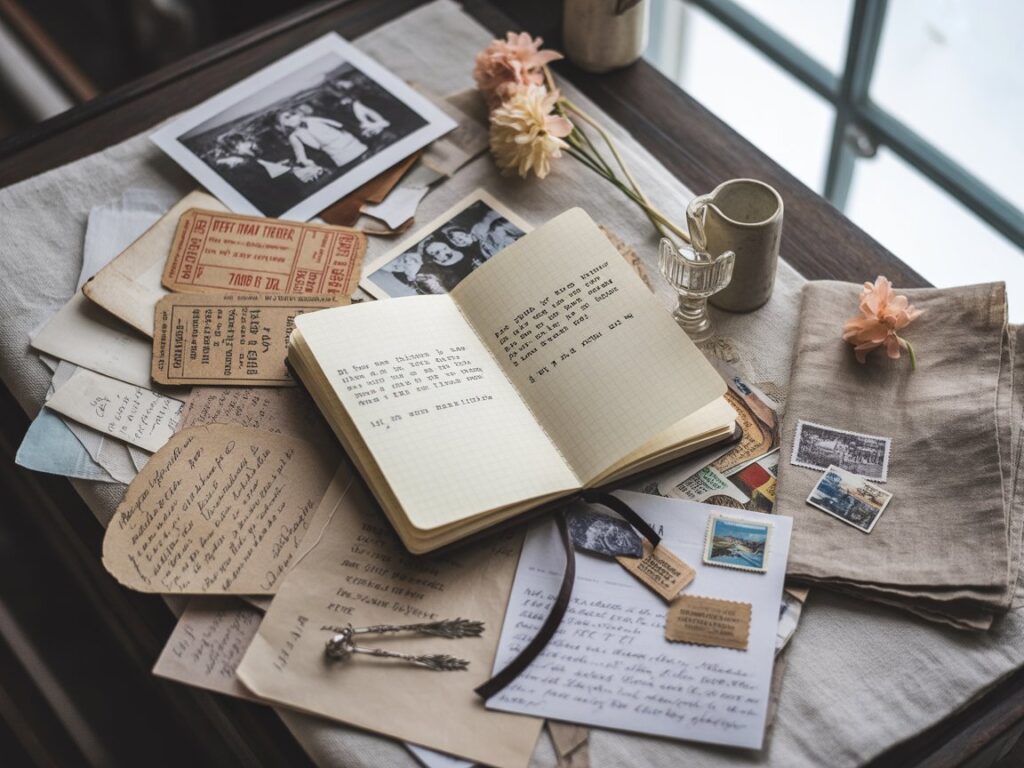
Junk journaling has exploded in popularity over recent years, and it’s easy to understand why. In our increasingly digital world, there’s something profoundly grounding about working with your hands, touching textured papers, and creating something tangible that exists in physical space.
Memory-Keeping with Soul
Unlike digital photos that live in the cloud, junk journals provide a tactile way to preserve memories. The act of selecting which napkin from that café, which movie ticket, or which handwritten note to include becomes part of the memory itself. Years later, running your fingers over a rough piece of burlap or catching the faint scent of old paper can transport you back to a specific moment in ways that a digital file simply cannot.
These journals become time capsules of your life—not just the big moments, but the small, everyday details that make up the texture of your days. The wrapper from your favorite chocolate, a fragment of a letter from a friend, a paint chip from redecorating your bedroom—these seemingly insignificant items tell a richer, more intimate story than perfectly posed photographs ever could.
Mindfulness and Creative Expression
In our fast-paced, notification-filled lives, junk journaling offers a rare opportunity to slow down. The process is inherently meditative. Sorting through papers, deciding what goes where, tearing and layering, and gluing—these activities require you to be present, to make small aesthetic decisions, and to engage with materials in a sensory way.
There’s no pressure for perfection in junk journaling. Wrinkles add character. Torn edges create visual interest. Coffee stains become part of the design. This freedom from perfection can be incredibly liberating, especially for people who feel intimidated by traditional art forms or who struggle with perfectionism. You literally cannot mess up a junk journal—every “mistake” is simply another layer of the story.
Many crafters report that junk journaling helps reduce anxiety and provides a healthy outlet for processing emotions. The repetitive motions of cutting, gluing, and arranging can be soothing, while the creative decisions engage your mind in a gentle, non-demanding way.
Freedom and Flexibility
One of junk journaling’s greatest appeals is its complete flexibility. You can use whatever materials you have on hand—no need to buy expensive scrapbooking supplies or matching paper collections. That package of vintage postcards from an estate sale? Perfect. Old book pages from damaged books? Ideal. Fabric scraps from sewing projects? Beautiful additions.
You can also mix digital and physical elements freely. Many junk journalers print vintage images from the internet, design their own papers digitally, or incorporate digital collage elements alongside found objects. This hybrid approach means you’re not limited by what you can find physically, while still creating something wonderfully tangible.
There’s also no “right” way to use a junk journal. Some people use them as traditional journals for daily writing. Others create themed journals around specific topics like travel, nature, or favorite books. Some are purely visual art pieces with minimal writing. The journal evolves based on your needs and interests, shifting and changing as you do.
What You’ll Need to Start Junk Journaling
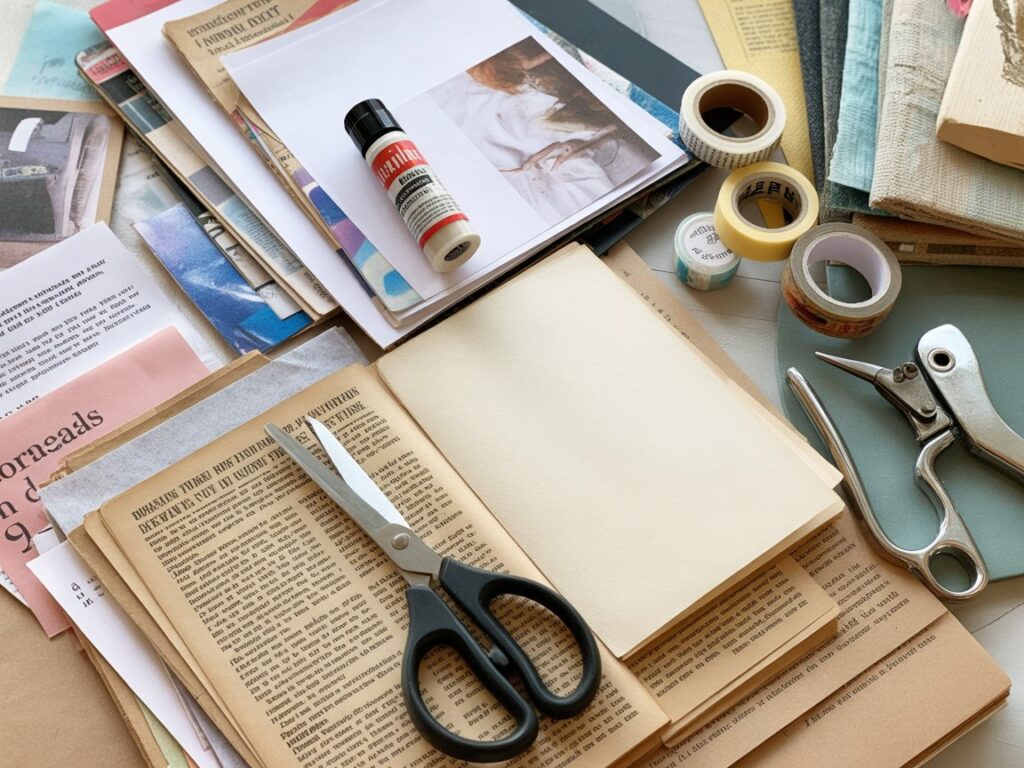
The beautiful truth about junk journaling is that you can start with almost nothing. Unlike many crafts that require significant upfront investment, junk journaling rewards resourcefulness and creativity over expensive supplies.
Essential Basics
At a minimum, you need just a few items to create your first junk journal:
Paper and ephemera form the foundation. Start collecting interesting papers from your daily life—magazine pages, old letters, packaging with pretty designs, maps, sheet music, book pages, wallpaper samples, tissue paper, napkins, and any printed material that appeals to you. Don’t overlook unconventional options like coffee-stained paper, brown paper bags, or security envelopes with pretty patterns inside.
Adhesive is crucial for assembling your journal. A simple glue stick works perfectly for most applications. Many junk journalers also love matte gel medium, which acts as both glue and a sealant. Double-sided tape, washi tape, and even good old-fashioned liquid glue all have their place in your toolkit.
Cutting tools help you shape your materials. Scissors are essential, though you can create interesting effects by tearing paper instead. A craft knife and cutting mat expand your possibilities but aren’t necessary when starting out.
The binding method holds everything together. The simplest approach is to punch holes and use rings, ribbon, or string to bind your pages. Some crafters stitch signatures together for a more traditional book binding, while others use large clips or even glue pages into an old book cover.
Imagination is your most important tool. The willingness to experiment, to see potential in unlikely materials, and to embrace imperfection will serve you better than any fancy equipment.
Optional Additions
As you develop your practice, you might enjoy adding embellishments like lace, buttons, ribbon, stamps, stencils, watercolors, or vintage images. But resist the urge to buy everything at once. Half the joy of junk journaling is discovering materials organically and finding creative uses for things you already own.
Digital Kits: A Modern Twist on a Vintage Craft
While junk journaling celebrates found and repurposed materials, digital printables have opened exciting new possibilities for this vintage craft. Digital junk journal kits offer curated collections of printable papers, cards, tags, and ephemera designed to work together aesthetically while maintaining that authentic vintage feel.
The Advantages of Digital Resources
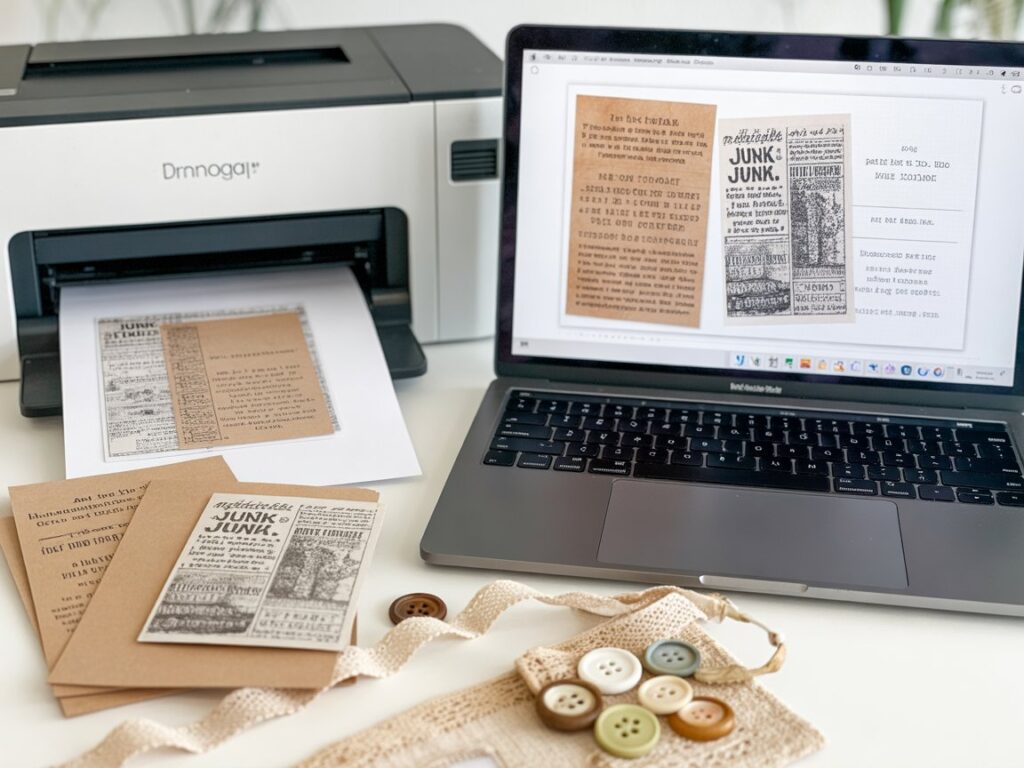
Digital printables solve several common challenges for beginner junk journalers. Not everyone has access to vintage materials, estate sales, or antique shops. If you live in a small apartment, storing large collections of physical papers might be impractical. Digital kits let you access beautiful vintage-inspired designs without the storage concerns or the sometimes-frustrating hunt for specific materials.
You can also print exactly what you need, when you need it. Want five copies of that particular tag for a project? Print them. Need that page in a different size? Adjust and print. This flexibility allows for experimentation without anxiety about “wasting” precious one-of-a-kind materials.
Many digital kits include matching elements—papers, cards, envelopes, and tags—that coordinate effortlessly. This takes the guesswork out of color matching and style cohesion, which can be particularly helpful when you’re learning to develop your aesthetic eye.
Blending Digital and Found Materials
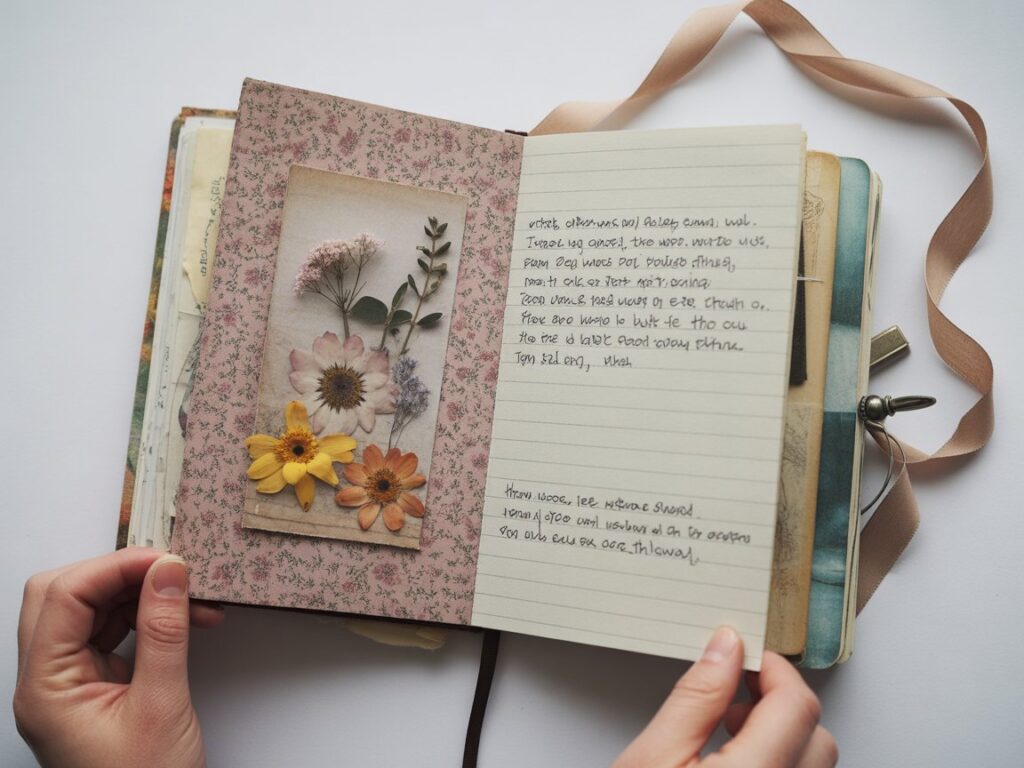
The most satisfying approach often combines digital printables with found objects and handmade elements. You might print beautiful vintage floral papers as backgrounds, then layer them with actual pressed flowers, handwritten notes, and fabric scraps. The printed elements provide a cohesive foundation while your personal additions make the journal uniquely yours.
Digital resources also allow you to incorporate images that would be impossible to obtain otherwise—vintage photographs from the 1800s, old botanical illustrations, antique map fragments, or historical documents. These can be printed on various papers (regular printer paper, cardstock, specialty papers, or even fabric) to create different textures and effects.
The key is remembering that digital elements are simply tools, not shortcuts. The magic still happens in your hands—in how you layer, distress, arrange, and personalize these printed materials. Running a tea bag over a freshly printed page, crumpling it, tearing the edges, and combining it with a piece of lace from your grandmother’s sewing kit transforms a digital file into something rich with personal meaning and vintage character.
Try It Yourself: Beginning Your Junk Journal Journey
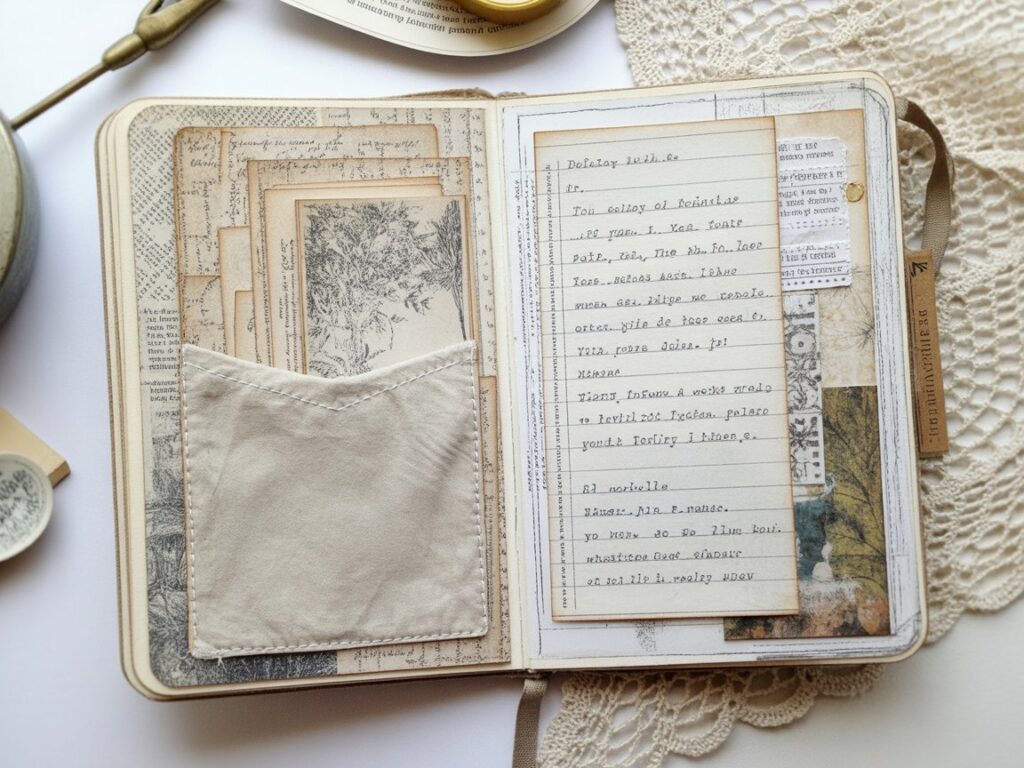
The best way to understand junk journaling is simply to begin. Don’t wait for the perfect materials or the ideal inspiration—start with what you have right now.
Your First Steps
Choose a foundation for your journal. This could be a small stack of mixed papers (even 6-10 pages is enough to start), an old composition notebook you’ll embellish, or even a few sheets of cardstock folded and secured with ribbon.
Gather materials from around your house. Raid your recycling bin for interesting packaging. Look through old magazines for images or text that speak to you. Check drawers for forgotten cards, letters, or papers with sentimental value. Cut various papers into different sizes to create visual interest.
Don’t overthink it—just start layering. Glue a background paper to your page. Add a smaller contrasting piece on top. Create a pocket by gluing three sides of an envelope fragment. Tuck a tag inside. The more you experiment, the more you’ll discover what you enjoy.
Add interactive elements like fold-out pages, hidden pockets, or lift-up flaps. These create surprise and engagement, making your journal feel more dynamic and personal.
Most importantly, use your journal. Write in it, sketch in it, glue things in it. A junk journal isn’t meant to be precious—it’s meant to be a living, evolving document of your creative life.
Download Your Free Starter Kit
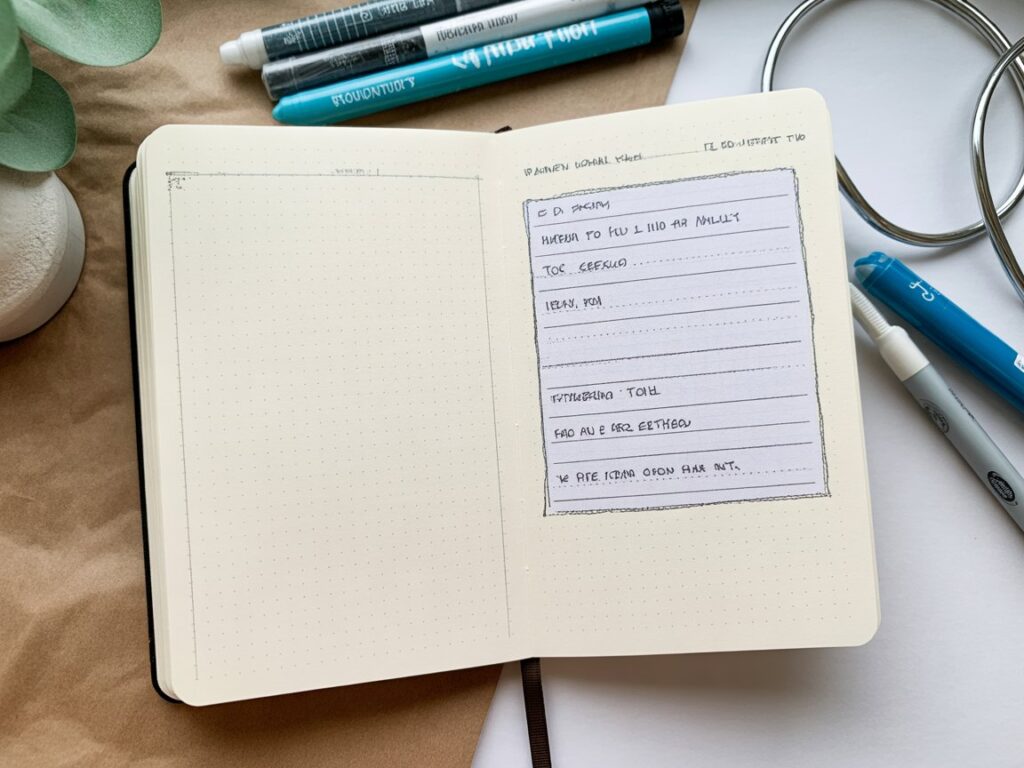
Ready to dive in but not sure where to begin? Download your free 6-page junk journal starter kit and create your first spread today. This beginner-friendly collection includes coordinating vintage-inspired papers, tags, and cards that you can print at home and start using immediately.
Whether you’re documenting daily life, exploring your creativity, or simply enjoying the meditative process of working with your hands, junk journaling offers a welcoming, forgiving space for self-expression. There’s no wrong way to do it—only your way.
Your scraps have stories to tell. It’s time to help them find their voice.